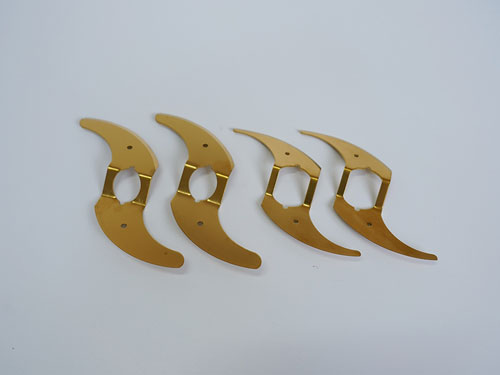
 Home > News
> News Information
Home > News
> News Information
Hardware stretching partsIn our daily lives, it can be seen everywhere that due to various reasons, hardware stretching parts may encounter various problems during mass production. This article will summarize the experience and share solutions with everyone:
1. The main reason for the inconsistent shape and size of hardware stretching parts is due to inaccurate elasticity and positioning. In addition to taking measures to reduce rebound, the reliability of blank positioning should also be improved.
2. The surface strain of metal stretching parts is caused by improper material selection, low hardness and smoothness of heat treatment, wear of concave die corners, poor surface quality of bent blanks, poor material thickness, unreasonable process selection, insufficient lubrication, and other reasons.
3. Bending cracks in hardware stretching parts
(1) When the angle between the bending curve and the texture direction of the metal plate does not conform to the specified layout and a unidirectional V-shaped bending is performed, the bending curve should be perpendicular to the texture direction; When bending in two directions, the bending curve should be at a 45 degree angle to the texture direction.
(2) The material plasticity of hardware stretching parts is poor.
(3) The bending radius is too small, resulting in poor pickling quality.
(4) Insufficient lubrication leads to high friction.
(5) Wear of convex concave die fillet radius or insufficient clearance - increased feed resistance.
(6) The quality of the rough cutting and cutting part of the hardware stretching parts is poor - there are burrs and cracks.
(7) Material thickness and dimensions severely exceed the tolerance - difficult to feed.

Solution:
1. The processing shape of metal stretching parts should be as simple and symmetrical as possible, and stretching should be done in one go as much as possible.
2. Parts that require multiple stretches may show marks during the stretching process, while ensuring the necessary appearance quality.
3. On the premise of ensuring installation requirements, the side wall of the stretching part has a certain slope.
4. The distance between the edge of the hole on the bottom or flange of the hardware stretching part and the side wall should be appropriate.
5. The corner radius of the bottom and wall, flange and wall, and the four corners of the rectangular part should be appropriate.
6. The scale marking of hardware stretching parts cannot be marked together with internal and external scales.


.jpg)






